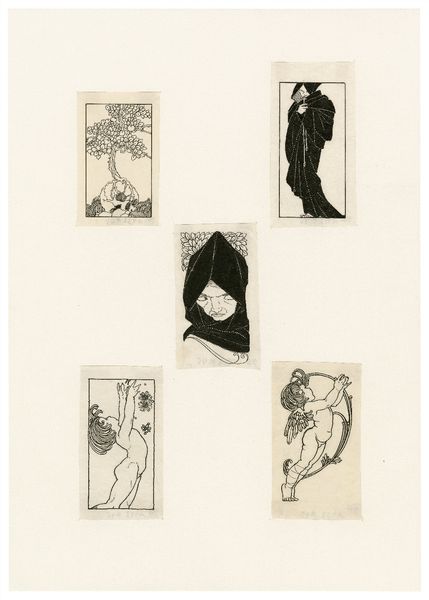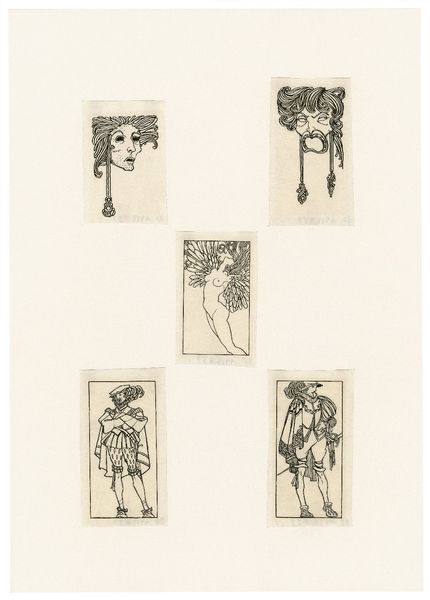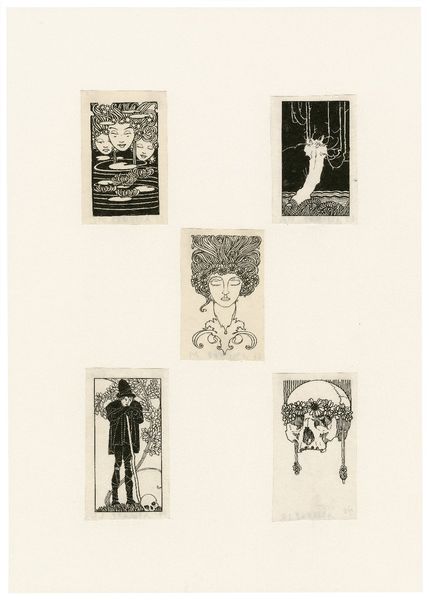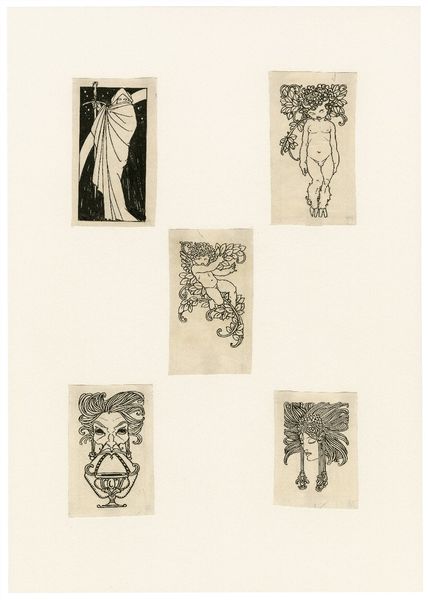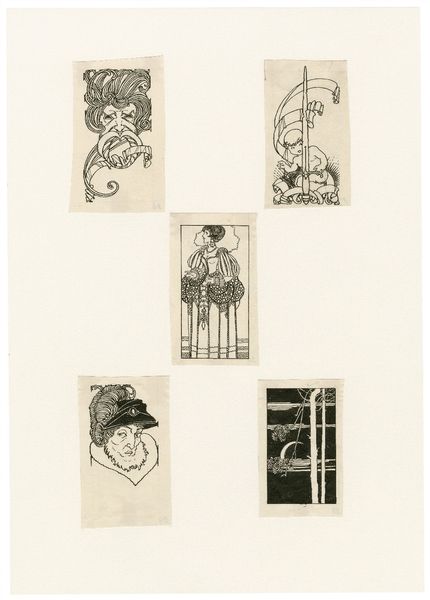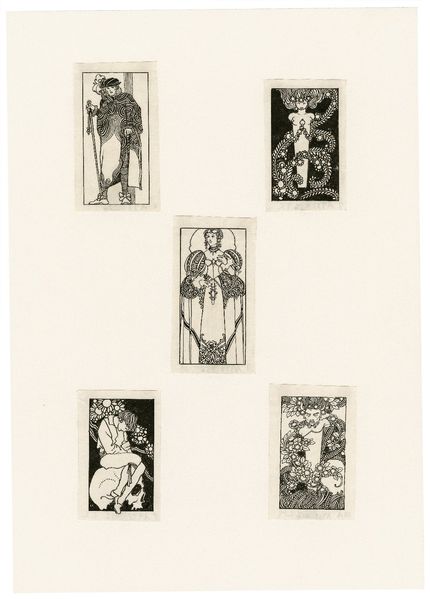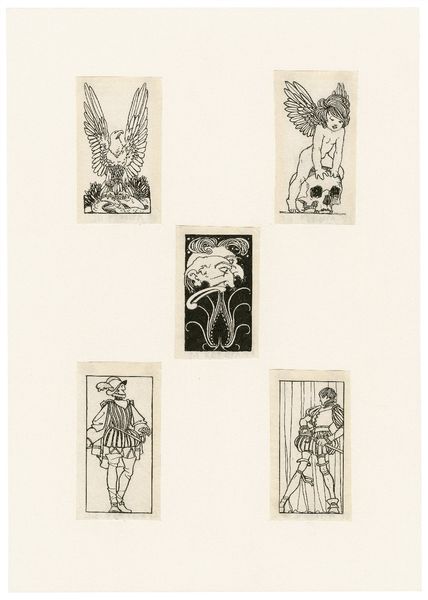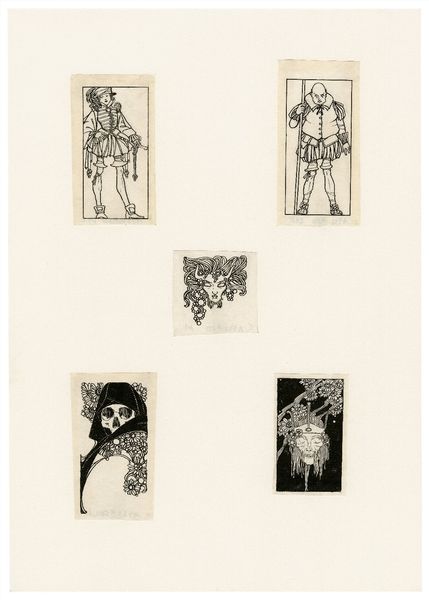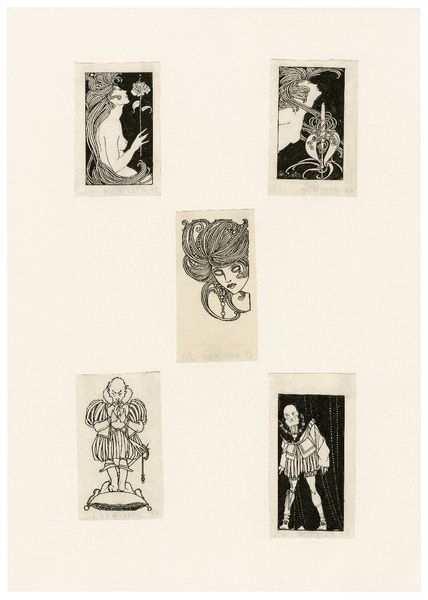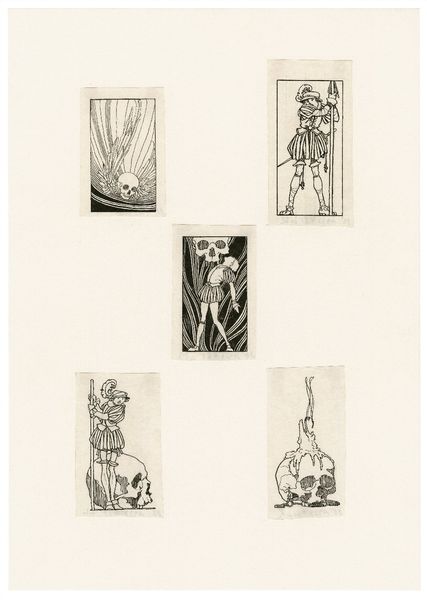
drawing, graphic-art, etching, paper, ink
#
portrait
#
drawing
#
graphic-art
#
pen drawing
#
etching
#
etching
#
figuration
#
paper
#
ink line art
#
ink
#
linocut print
#
line
Copyright: Public domain
Editor: This drawing, titled "Hamlet," is attributed to John Austen. It looks like a collection of pen and ink drawings on paper, or perhaps etchings? I'm struck by how delicate and graphic it is at the same time. What's your take? Curator: It’s intriguing how Austen, associated with book illustration and printmaking, chose etching or a similar technique. The very process speaks volumes. The labour invested in each line, etched or drawn, replicates the intensity of emotional labor found in Shakespeare. Consider the economic implications too – prints made art accessible to a wider audience, disrupting notions of unique, precious artworks for the elite. Editor: So, you're focusing on the materials and how it makes it accesible? How does that tie into the image itself? Curator: Precisely! Austen isn't just depicting "Hamlet"; he’s employing methods tied to distribution and democratization of culture. These choices weren't arbitrary; they were carefully made by Austen to fit in with the burgeoning aesthetic movement. Do you notice the repeated line-work, almost obsessive in the renderings of hair and drapery? Editor: Now that you mention it, I do. I can see how labor intensive it looks! Curator: Exactly, the work is less about the subject, Hamlet, and more about highlighting its manufacture as a reproducible, widely available artwork. Austen underscores the industrial capacity in illustration, and draws the viewer's attention to the work involved. This elevates craft while simultaneously deconstructing classical artistic ideals. Editor: That’s a totally different way to look at it. I was focusing on what the different characters mean in relation to the play. Curator: Thinking about the act of production shifts our understanding, doesn't it? Editor: Definitely. Now, I see the artist highlighting both the means and accessibility of art as powerful cultural statements. Thank you.
Comments
No comments
Be the first to comment and join the conversation on the ultimate creative platform.
